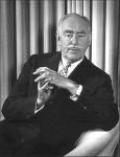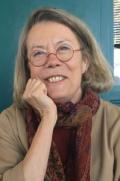After her death, Dickey Chapelle’s editor at National Geographic paid tribute to the gutsy war correspondent he knew.
Editor's Note: Bill Garrett was Dickey Chapelle's primary contact at National Geographic and often worked with her on assignments in the field. He wrote these observations about his friend and colleague shortly after her death.
When the Pentagon wanted a photographer to record the largest airborne assault in the Vietnam War, the most qualified candidate was a young French woman.
At fi
These extraordinary women changed the history of photojournalism.
Kate Mullany's former home in Troy, New York honors one of the earliest women's labor unions that sought fair pay and safe working conditions.
Few roads were even paved when Alice Ramsey and three friends became the first women to drive coast to coast in 1909.
Her owner planned to take her from California to slave-holding Texas, so Biddy Mason went to court. After a dangerous drama, she won her freedom.
Born a
The long, embattled history of women’s suffrage that began with the 1848 Seneca Falls Convention continues to this day.
Editor's Note: Ellen Carol DuBois is a professor in the history department at UCLA and the author of numerous books on women’s suffrage including the recent, authoritative survey,
The ex-slave and investigative journalist spent a lifetime fighting against lynching and segregation — but also for voting rights for African-American women.
Editor's Note: Susan Ware is a historian, general editor of the American National Biography, and editor of the biographical dictionary, Notable American Women.
Not given credit for their work and paid half a man's salary, women writers won a landmark suit against discrimination at the magazines of Time, Inc., but their success has been largely overlooked.
In 1967 Time Inc. was the biggest magazine publisher in the world, and highly profitable. Its founder, Henry Luce, was still alive.
America’s first female soldiers were Signal Corps telephone operators making sure critical messages got through, often while threatened by artillery fire.
The Hello Girls: America’s First Women Soldiers, by Elizabeth Cobbs
The Women Airforce Service Pilots seemed strange and exotic to World War II America. In fact, not even the military could quite fiqure out what to do with them.
Women’s history today is no longer a backwater, nor is the profession of history a male craft.
T
Nearly a century after she came on the scene, her wit, bravado, and sexuality are a bigger presence than ever
How women entrepreneurs reshaped the American economic landscape in the wake of WWII.
When the National Foundation of Women Business Owners announced in May 1999 that women own nearly 40 percent of the nation’s businesses, there was little fanfare or surprise. Americans have become increasingly accustomed to female entrepreneurs as an economic force.
You’ve likely never heard of her
Earlier this year, Time magazine celebrated the end of the twentieth century and its own seventy-fifth anniversary together with big parties and statistics.
Consigned to the Pennsylvania Railroad’s “Garbage Run,” they fought their own war on the home front, and they helped shape a victory as surely as their brothers and husbands did overseas
All the new lady brakemen on the Pennsylvania Railroad were put to work on what was officially known as the Jersey Coast Extra List.
On November 2 the first issue of the Harper brothers’ new magazine Harper’s Bazar appeared, based on the sophisticated German publication Der Bazar and headed by the admired translator and historian of New York Cit
E.G. Lewis decided that a strong man could liberate American women and make money doing it
THE CELEBRATION began even before the opening gavel of the First American Woman’s League Convention. As the thousand arriving delegates made their way out Delmar Boulevard to University City, a new suburb of St.
For millions of women, consciousness raising didn’t start in the 1960s. It started when they helped win World War II.
DURING THE FIRST three years of World War II, five million women covered their hair, put on “slacks,” and at the government’s urging went to work in defense plants. They did every kind of job, but the largest single need was for riveters.
The author recalls two generations of “Cliffie” life—hers and her mother’s—in the years when male and female education took place on opposite sides of the Cambridge Common and women were expected to wear hats in Harvard Square
My mother was a member of the class of 1899 at Radcliffe College, having come east from St. Paul, Minnesota—a sort of reverse pioneer.
Mr. Richard Reeves alleges that Tocqueville “thought American women were docile” (“If Tocqueville Could See Us Now,” June/July issue).
How a young New York society matron named Alice Shaw dazzled English royalty with her extraordinary embouchure
Whistling women and crowing hens Always come to some bad ends. —American folk-saying
How Juliette “Daisy” Low, an unwanted child, a miserable wife, a lonely widow, finally found happiness as the founder of the Girl Scouts of America
In 1911 Juliette “Daisy” Low taught her first seven female Girl Guides to raise chickens and to spin wool.
How the mistress of the plantation became a slave
“WE’RE USED to living around ‘em. You Northerners aren’t. You don’t know anything about ‘em.” This is or was the allpurpose utterance of white Southerners about blacks.
As three recent films show—one on the atomic bomb, one on women defense workers during the Second World War, one on the government arts projects of the thirties —this history of our times offers film makers arresting opportunities.
The sexual habits of American women, examined half a century before Kinsey
The nineteenth century was, according to the stereotype, ashamed and fearful of all things sexual. It was an era when, as one visitor to America swore, teachers put “modest little trousers with frills at the bottom” over the “limbs” of their pianos.
One of Ruth Snyder’s Crimes Was Murder
In 1925 a woman named Ruth Snyder too up with a salesman—a corset and brassiere salesman to be exact—and together on March 20, 1927, they murdered her husband in his bed. Months later, they were both electrocuted.
Although it has been disparaged as “General Washington’s Sewing Circle,” this venture was the first nationwide female organization in America
When news that the British had taken Charleston, South Carolina, reached Philadelphia in May of 1780, merchants and government officials reacted to the disaster by taking steps to support the inflated Pennsylvania currency and solicit funds to pay new army re
She was “one of the most active and most reliable of the many secret woman agents of the Confederacy.”
She began her career as a spy and ended it as an actress, and there are no two professions more thickly larded with myth and lies. At least one historian, despairing of seeing anything real behind the mists, concluded that she had never lived at all.
Unschooled and uncompromising, she founded her own faith
Mary Baker Eddy was, against all odds, one of the most influential women of her age. Born into unpromising circumstances, she never mastered the limited education that was available to her. She lacked literary talent and any real vocation for family life.





